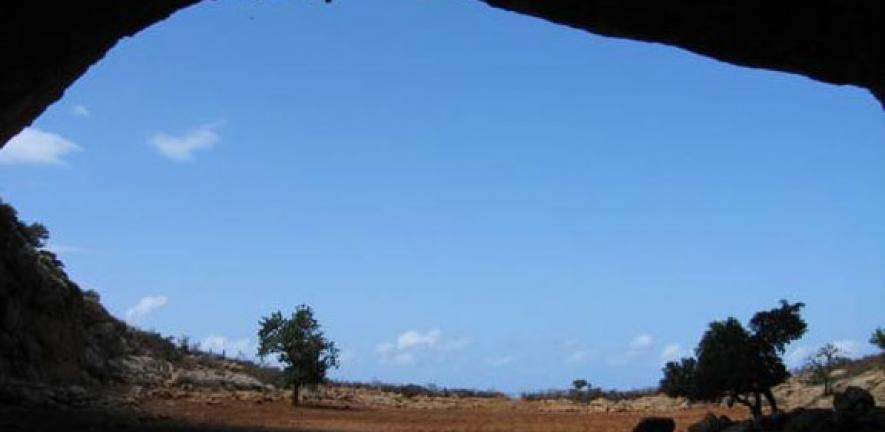
Excavation of the deepest archaeological trench in North Africa half a century after it was first dug is offering a glimpse of up to 200,000 years of human history.
Excavation of the deepest archaeological trench in North Africa half a century after it was first dug is offering a glimpse of up to 200,000 years of human history.
We now have definite evidence of our species being in North Africa for at least 80,000 not 40,000 years.
Professor Graeme Barker
In 1948, Cambridge academic Professor Charles McBurney stumbled upon a large cave on the north coast of Libya. Returning to excavate it three years later, he sank a trench 14 metres into the floor of the cave, finding layer upon layer of evidence of human occupation going back thousands of years into deep prehistory.
Over 50 years later, excavation resumed in 2007 when Professor Graeme Barker, Director of Cambridge’s McDonald Institute for Archaeological Research, led an expedition of 30 academics from 10 research institutes back to the Haua Fteah Cave. Now, mid-way through this five-year project, the researchers have made a fascinating discovery that sheds new light on when modern humans first arrived on Africa’s northern shores.
‘McBurney’s work was a seminal contribution to world prehistory. With techniques available to him in the 1950s, he concluded that the trench spanned about 80,000 years of history. He believed the human jaws that he discovered deep down were pre-modern in anatomy and that modern humans (Homo sapiens) arrived in North Africa around 40,000 years ago, which is about when they reached Europe,’ explained Professor Barker. ‘The advent of new technologies has enabled us to re-evaluate this. Already our findings are showing that this site is probably far older than McBurney realised. The jaws are now recognised to belong to Homo sapiens, and we now have definite evidence of our species being in North Africa for at least 80,000 not 40,000 years.’
The team has painstakingly emptied the sediment that McBurney used to re-fill the trench, revealing the original walls of the pit. They have now reached a depth of 10 metres, just below where the jaws were discovered. Using dating technology such as optical stimulated luminescence – which essentially measures the last time a grain of quartz saw the light of day – the researchers have established that they have reached sediment that is 90,000 years old.
‘Now that we have the first definite evidence for our species being in North Africa at least 80,000 years ago, the question is whether they were behaving in ways we would recognise as modern. We are looking for evidence of their technologies and hunting practices and their level of cognition,’ explained Professor Barker. ‘And since we have another 6 metres to go before we hit bedrock, the deepest archaeological trench in North Africa has potentially a 200,000-year-old story to tell.’
For more information, please contact Professor Graeme Barker (gb314@cam.ac.uk), the Disney Professor of Archaeology. This research was principally funded by the European Research Council, with supplementary funding from the Society of Libyan Studies, the project’s sponsor.
This work is licensed under a Creative Commons Licence. If you use this content on your site please link back to this page.





